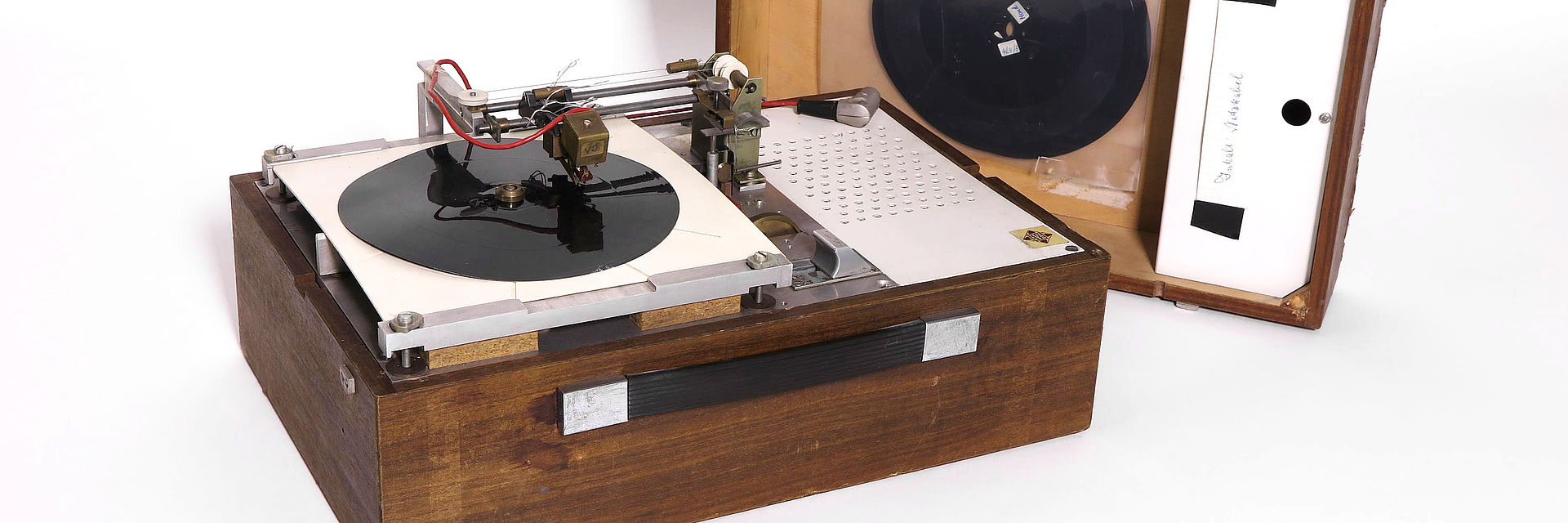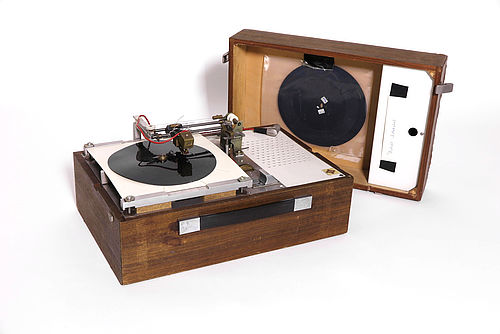
Videodisc Player (Prototype), 1970
Object of the month July 2020

SDTB
A new audiovisual age was ushered in 50 years ago. Telefunken and Philips, the two leading consumer electronics companies in Europe, introduced video systems for home use at practically the same time. The aim was to bring much needed variety to the everyday monotony of television. Until then, the only moving pictures that people could watch were in the cinema or on the television at home, where the available programming was limited. The 8 o'clock evening news and a special Saturday night lineup of family entertainment were the highlights. The advent of streaming services or even video rental shops was still decades away.
On June 23, 1970, Philips introduced a videocassette recorder in Hamburg, Germany. One day later Telefunken and the vinyl record manufacturer Teldac presented the prototype of a videodisc player. It not only looked like a normal record player but also worked on the same basic principle: A thin plastic disc rotates on a turntable and the disc´s extremely fine grooves are scanned by a needle. In contrast to a record player, however, not only sound signals are generated but image signals as well. This device, when connected to a TV, is able to play ten-minute videos.
In producing the videodisc, Telefunken engineers had pushed the needle-in-groove principle that Thomas A. Edison had invented in 1877 to the limit of what was physically possible. Nonetheless, this brilliant technological feat soon proved to be a retail flop. There was simply no real demand for 10-minute videos. Telefunken stopped production of videodisc players in 1975.
The videodisc player is part of the museum’s online collections.
